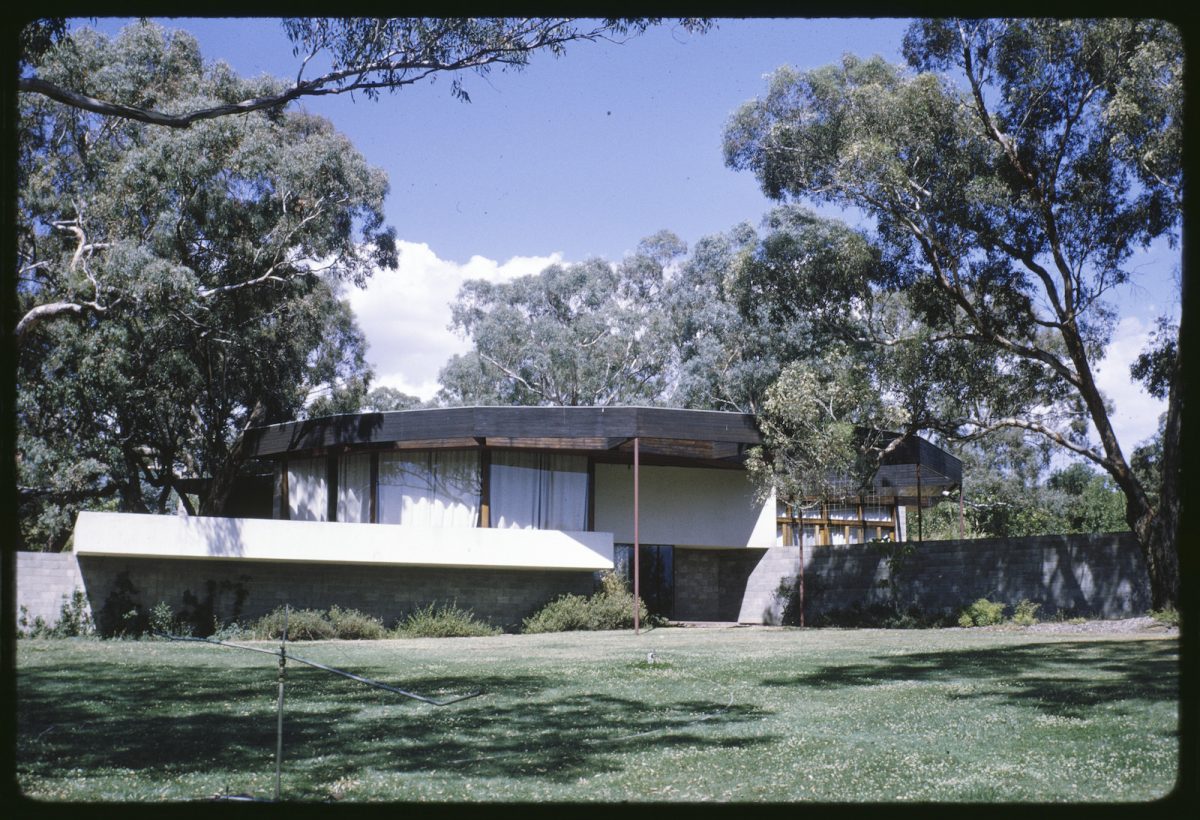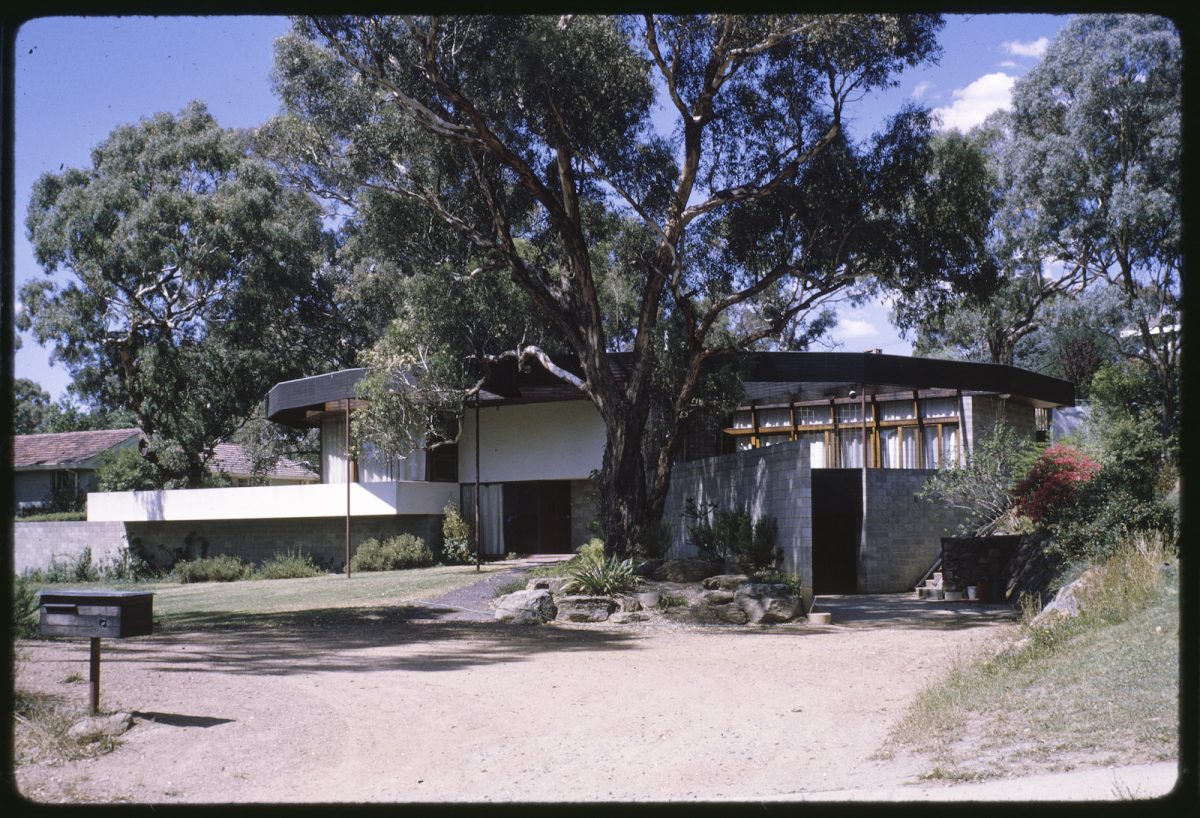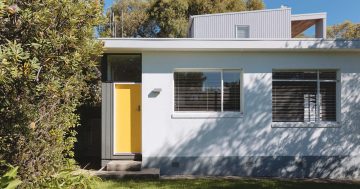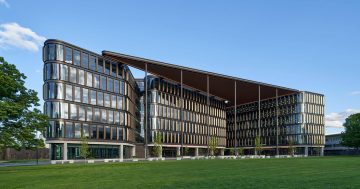
Locals will be familiar with the iconic Round House, but how many of us know the story behind it? Photo: Peter Wille / State Library Victoria.
We have all seen Canberra’s many modernist buildings, but how well do we know the stories behind them?
This is the premise of Roger Benjamin’s tribute to his childhood home, the Round House in Deakin – one of Canberra’s most iconic mid-century modern buildings, designed by Czech architect Alex Jelinek in 1956.
Mr Benjamin will be giving a tour of the Benjamin House and drawing on his new book, Growing up Modern: Canberra’s Round House and Jelinek on 13 April as part of this month’s Canberra and Region Heritage Festival being organised by Canberra Modern.
Canberra Modern is a small team of heritage and design experts who organise events showcasing the city’s mid-century modern architecture to protect and better educate Canberrans about these important spaces and their history.
The Canberra Modern team are hosting several other events for this year’s Heritage Festival, including tours of Manning Clark House in Forrest and an exhibition of miniature-scale architectural models of iconic modernist buildings.
Canberra Modern was created in 2017 by co-founders Amy Jarvis and Edwina Jams as an “event-based advocacy platform” designed to “engage Canberrans and those beyond with this iconic part of our heritage”.
As Amy explained, the post-war era was an “exciting phase in Canberra’s history”, and a period of “optimism and bravery” as investment poured into developing the city as we know it today.
It was a time when “government funding and optimism came together to let architects have free reign”, creating some of Australia’s most interesting and experimental architecture.
However, this period of Canberra’s history has often been neglected, leaving the stories of the Benjamin House and others like it still unfamiliar to many locals.
“Canberra hasn’t been able to sell that story,” Amy said.
“[The buildings are] well within living memory, so people haven’t quite got their head around them being significant yet.
This has resulted in many buildings being “lost, demolished or unsympathetically refurbished”, making it even more important that those still standing are preserved to tell the tale for years to come.

Amy describes the Round House as “the epitome of experimental architecture”. Photo: Peter Wille / State Library Victoria.
There remains a misconception that modern buildings are not of historical importance because they are relatively new, even though they originate from one of the most important periods of Canberra’s development.
Amy and Edwina are hoping to challenge that through their events.
“A lot of people think Canberra is young,” Amy said. “When I tell people I work in heritage conservation, people say, ‘What heritage?'”
As a result, the history of buildings like the Benjamin House is still untold.
“We get wrapped up with Canberra being a political capital and we lose sight of it from an aesthetic and architectural point of view,” she added, saying people need to “look past the roundabouts and the politicians” to consider another side of the city’s history.
Thursday’s event, Growing up Modern at Canberra’s Round House with Roger Benjamin, will take visitors through his childhood home and the stories of the people who created it.
The house was commissioned by Roger’s parents, ANU Professor Bruce Benjamin and his wife Audrey, a writer and environmental activist.
“The ANU was an amazing magnet that pulled people to Canberra,” Amy said.
“Academics had come from around the world with an ambition to live in modern homes in a modern city.”
Its designer, Alex Jelinek, migrated from Czechoslovakia to Australia in 1950. He had previously studied modernist architecture in Prague, but initially arrived in Melbourne on a labour contract. He later met and began a relationship with artist Lina Bryans, Bruce Benjamin’s second cousin. It was this family connection that brought Jelinek’s first commission.
The circular house at 10 Gawler Crescent in Deakin is “the epitome of experimental architecture” that was being pioneered at the time, with large glass windows, mahogany beams and asymmetrical rooms creating a geometric effect.
It was notable for its spiral plan, which exemplified the “mid-century idea of experimentation and almost craziness”, while still being a liveable family home, where Roger Benjamin grew up and later raised his own family after buying back the house for himself.
Amy hopes the upcoming tour will help people learn more about Canberra’s iconic mid-century buildings and inspire more curiosity about their stories.
“It’s iconic for people who drive past the house … People always wonder about it and think what an unusual place.”
“The idea of giving people access to these places [is] really important to us.”
Growing up Modern at Canberra’s Round House with Roger Benjamin is sold out, but Canberra Modern is running other events for the Heritage Festival. Tickets and details of the events can be found on its website.














